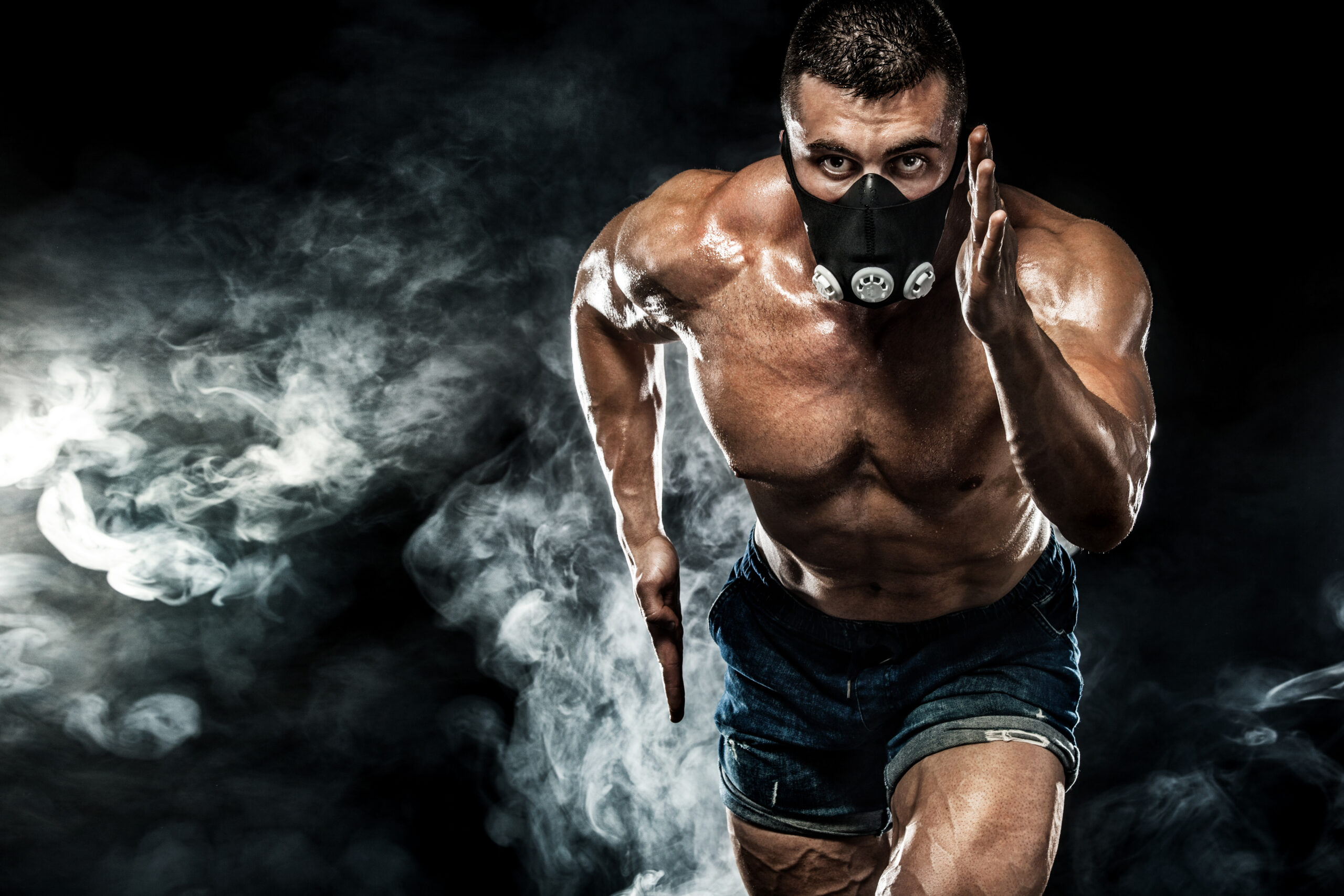People like new toys and gadgets, especially ones which can improve their performance. In recent years breathing masks and gas masks have become popular amongst athletes and fitness enthusiasts. The idea originated from firefighters and the military who experience some extremely intense, physical situations while wearing breathing apparatus. The experience of wearing these masks in such scenarios can be quite overwhelming. In order to familiarize themselves with these situations they began to train while wearing their equipment. Obviously the more accustomed to something we are the more comfortable we are with it. Shortly, after we saw them to be used in the fitness community. They started to use similar equipment in search of more intense training methods.
In very recent years breathing masks have been produced commercially and specifically for the fitness and sports industry. Like any new training tool it comes with many benefits. This article is aimed at examining the physiological theory for the use of such masks. By understanding the physiological processes taking place we can make better use of such equipment.
The major misconception which seems to have formed with the use of these masks is their ability to replicate high altitude. High altitude has been linked to many physiological benefits to cardiovascular conditioning. The concept of this relates to the partial pressure of atmospheric oxygen. Oxygen (O2) molecules move from lungs to blood and the blood to muscle through a process of diffusion. The molecules travel across thin membranes from areas of high, to low pressure. If ambient oxygen pressure is low, as it is at high altitude, less molecules cross from lungs to the blood and so forth. The amount of O2 in the air remains exactly the same (20.93%) but overall air pressure (Barometric Pressure) is greatly reduced. In order to compensate, our body first increases breathing rate and take bigger breaths. This allows us to utilize a larger portion of the lung and alveoli allowing more O2 to diffuse into the bloodstream. Another reason is to excrete Carbon dioxide (CO2). By blowing off CO2 we drop the pH level of the blood and create something known as “Respiratory alkalosis”. This allows more oxygen to be absorbed by our red blood cells. This process occurs similarly at sea level.
When exposed to this over long duration (16hrs+ per day for a minimum of two days)(Chapman et al, 1998) our body increases a hormone called Erythropoietin (EPO). This hormone when combined with iron stimulates the creation of new red blood cells, a larger amount of which allows us to transport more O2 around the blood. In addition our muscles respond to training by increasing mitochondria and capillarization of the fibres. This allows our muscles to consume more oxygen. The issue with altitude training is that our breathing rate can only increase so much and the other adaptations are relatively slow to occur. As a result the intensity of our training significantly drops. This is why many athletes choose to live at altitude and travel to sea level to train. It allows the adaptations to occur without training intensity suffering. This limitation is well documented.
Breathing masks do not alter the partial pressure of O2. They simply restrict airflow. They do not specifically filter O2 from the air. We compensate for this restriction by breathing more forcefully creating positive pressure to overcome the resistance. This is similar to techniques adopted by individuals suffering with breathing difficulties such as asthma and COPD. Pursed Lip Breathing is an excellent example of a breathing technique used to compensate for resistance. It is also something we automatically do when wearing a gum shield or mouthguard. We do not experience any increase in EPO as pressure gradients are maintained. The processes taking place at altitude are different from the ones taking place when using these masks .
In order to compensate for resistance we must breath with more force, both when we inhale and exhale. We use the diaphragm and intercostal muscles. These muscles are like any other; they become stronger when a stress stimulus is applied. When using these masks we are in theory strength training our breathing muscles. This can allow us to utilize a larger portion of our lungs, making our breaths more efficient and deeper. It also allows us to develop our breathing muscles, which will make breathing easier in normal conditions. This is of great benefit to an athlete’s conditioning as the effort in breathing will be greatly reduced.
In addition to physical adaptations we can also experience some mental benefits. In scenarios where breathing is restricted we get a sense of breathlessness. This often causes panic. In a competitive environment panic can be a debilitating experience. Like firefighters and military servicemen, becoming accustomed to that feeling can have a great benefit. Learning to be comfortable and to relax allows our breathing to settle. Having the experience to know how to breath efficiently in such a scenario can allow an athlete to maintain composure. I believe this to be a very significant benefit to the use of such masks.
Like any new tool or training method it is very important to understand the processes taking place and the adaptations that come with them. Unfortunately there is relatively little research available on the use of breathing masks. I believe them to be an effective tool when used for the right goal. With any training an athlete wants the best results. Examining the physiological process taking place we can often learn to make best use of the tool. While science cannot always give the exact answer it usually puts us on the right track.
